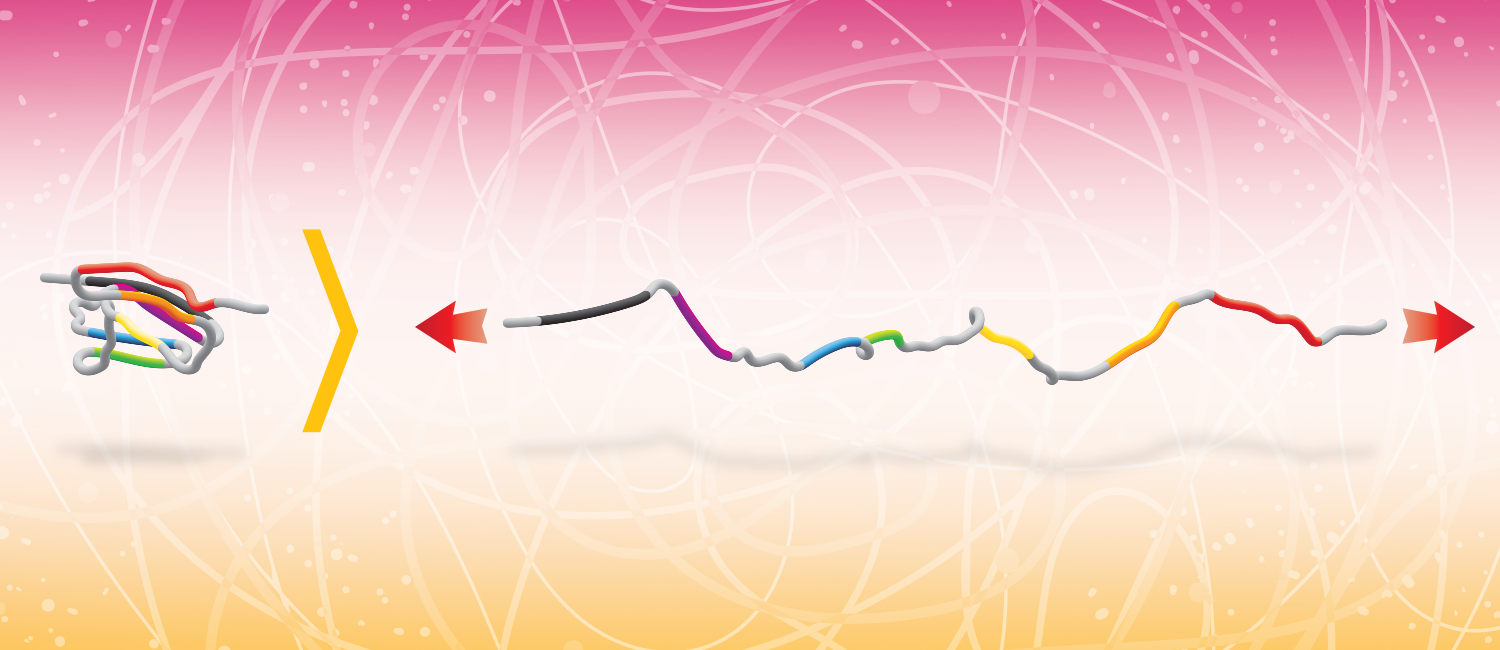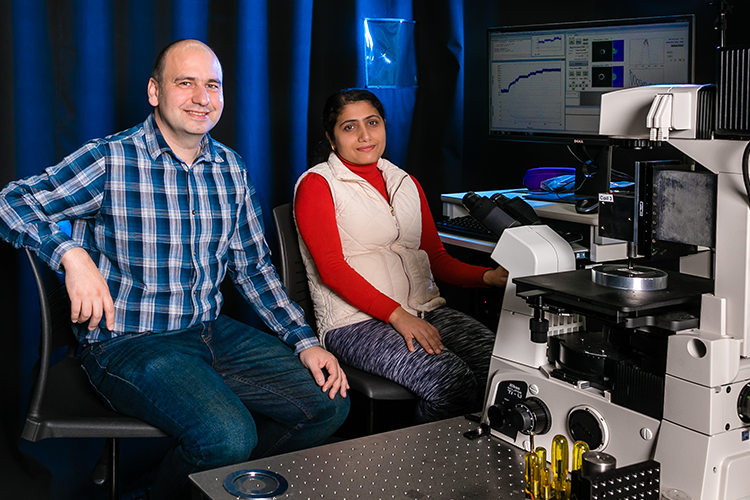
Studying the patterns of protein folding
When we exercise, proteins in our muscles transform energy into mechanical work to produce movement. To accomplish this feat, the protein molecule acquires a specific three-dimensional shape in a process called protein folding.
Biophysicist Ionel Popa is investigating how mechanical forces drive these molecules to fold and unfold as they carry out their biological tasks. This folding had been considered a once-in-a-lifetime event for a protein, but Popa is exploring the idea that it might have a functional role and occur continuously for some of the body’s proteins.
He aims to uncover the rules that govern how protein folding determines protein function. And he is investigating how folding and unfolding transitions could signal processes like cellular interactions or muscle contraction.

“Understanding these processes will have widespread consequences in comprehending the normal functioning of tissues, which could spur biomedical researchers to develop new therapeutic interventions,” says Popa, an assistant professor of physics in the College of Letters & Science.
Using instrumentation built in-house, Popa’s research team can induce folding and unfolding transitions for a single protein at forces equivalent to those experienced inside our cells. His work recently earned an Early Career Development Award, the National Science Foundation’s most prestigious grant for younger researchers.
Popa’s device tethers single proteins between a glass surface on one end and a paramagnetic bead on the other. While applying an almost imperceptibly tiny magnetic force, researchers measure the bead’s movement, and the results show how the protein folds and unfolds. When a protein interacts with one of its partners, there is a significant change in its measured response.
Popa already has used his technique to study the mechanical forces of titin, the giant protein that gives elasticity to moving muscles. Studying proteins that drive muscle contraction will help inform research on diseases like muscular dystrophy, which manifests as an increasing weakening and breakdown of skeletal muscles over time.